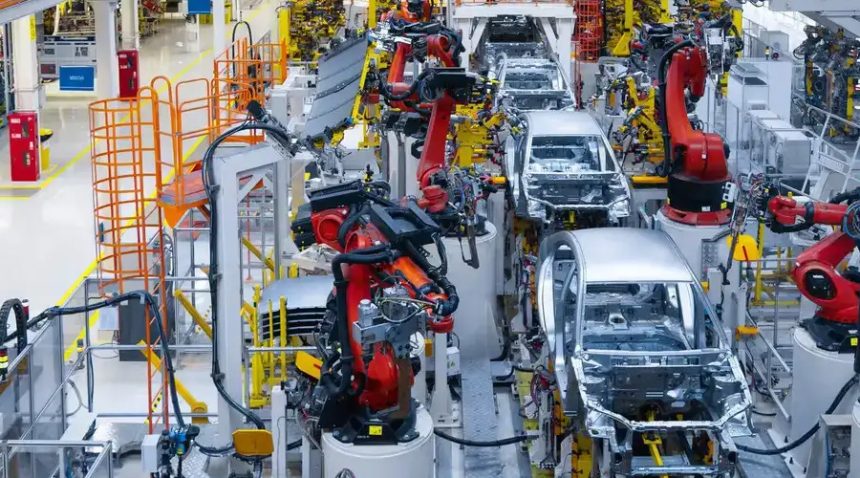With China’s new export rules shaking up rare earth supplies, India’s EV dreams face a tough test
The global auto industry, especially the electric vehicle (EV) segment, depends heavily on rare earth elements. These rare earth materials are crucial for manufacturing electric motors, batteries, sensors, and other advanced technologies used in modern vehicles. India, which has been trying to grow its auto sector and become a major EV manufacturing hub, now faces a serious challenge — a rare earth shortage. This shortage is mainly due to China’s export restrictions on rare earth magnets, creating an obstacle that threatens India’s automotive growth plans.
What Are Rare Earth Elements and Why Are They Important?
Rare earth elements include 17 metals, but in the auto industry, elements like neodymium, praseodymium, dysprosium, and terbium are most critical. These are used to make permanent magnets that power electric motors in electric vehicles, hybrid vehicles, and many other components like power steering, brakes, and sensors.
Without these magnets, electric vehicles cannot function. Even traditional petrol and diesel vehicles use rare earth-based components to improve performance, safety, and fuel efficiency.
China’s Rare Earth Export Restrictions
In April 2025, China, which controls nearly 90% of global rare earth processing, introduced strict export licensing rules on seven rare earth elements and finished magnets. Under the new rules, companies importing from China must disclose how they plan to use these materials and provide certificates verifying civilian, non-defense usage. These new procedures have led to delays in approvals, even for countries like India that heavily depend on China for their rare earth imports.
For India, the situation is alarming because nearly 85% to 90% of India’s rare earth magnets are imported from China. In the financial year 2024 alone, India imported approximately 540 metric tons of rare earth magnets, valued at nearly 200 million US dollars. The new restrictions have slowed down shipments, and many Indian automakers are warning that their inventory may run out by mid-July 2025.
Impact on Indian Auto Production
The shortage of rare earth materials has already started affecting India’s vehicle production plans. Many major automakers have announced production cuts and delays.
Maruti Suzuki, India’s largest automaker, had originally planned to produce 26,500 units of its first electric vehicle, the e-Vitara, between April and September 2025. However, due to the rare earth shortage, it has now reduced its production target to just 8,200 units.
Bajaj Auto, one of the country’s largest two-wheeler manufacturers, has also warned that production of its electric scooters could be disrupted from July 2025.
Sona Comstar, a major supplier of electric vehicle motors and components, has flagged concerns about supply chain risks caused by the shortage of rare earth magnets.
According to industry analysts, even a one-month disruption in rare earth supplies could delay the launch of new electric vehicles and impact India’s overall automotive growth targets.
This rare-earth roadblock comes at a time when India has been making strong progress in EV adoption. In May 2025, electric vehicles accounted for more than 4% of total passenger vehicle sales in India. The government has also set an ambitious target of achieving 30% EV penetration by 2030.
If the rare earth shortage continues, it could not only slow down EV production but also discourage further investments in India’s auto industry, affecting long-term growth.
Government and Diplomatic Efforts
The Indian government has quickly stepped in to manage the crisis. Several steps are being taken at the diplomatic, regulatory, and industrial levels to address the problem.
Diplomatic Talks with China
A high-level Indian delegation, which includes government officials and auto industry representatives, is planning to visit China to negotiate faster export license approvals. Indian companies have already submitted the necessary end-user certificates to Chinese authorities, clarifying that these materials are for civilian use only.
Prioritizing Domestic Supply
India’s state-owned mining company, IREL (India Rare Earths Limited), has been instructed to temporarily halt its rare earth exports to countries like Japan. The focus is now on meeting domestic demand first, especially for the auto sector. The government wants to double domestic neodymium production from its current levels to 450 metric tons by the financial year 2026 and further to 900 metric tons by 2030.
Strategic Interventions
The Indian ministries of commerce and external affairs are working closely together to resolve the issue diplomatically and ensure smoother import processes from China.
Long-Term Solutions for India
While short-term diplomatic efforts are underway, the rare earth crisis has exposed India’s heavy dependence on a single country for such a critical resource. In the long run, India must develop its rare earth supply chains to reduce such vulnerabilities.
Expanding Domestic Mining and Processing
India holds the fifth-largest reserves of rare earth elements in the world, with around 6.9 million tons of untapped reserves. However, processing rare earth materials is complex and requires advanced technologies. The government is now encouraging public and private partnerships to build an end-to-end domestic rare earth value chain—from mining and refining to manufacturing magnets.
IREL is already expanding its processing capacities in Odisha, Kerala, and Visakhapatnam. Its current small-scale magnet production facility, which produces samarium–cobalt magnets, may also be upgraded to produce neodymium magnets.
Diversifying Imports
India is also exploring partnerships with countries like Australia, the United States, and certain African nations that possess significant rare earth resources. Long-term contracts and joint ventures with global rare earth producers could reduce dependence on Chinese supplies.
Investing in Rare Earth-Free Technologies
Another way to reduce reliance on rare earths is by investing in the development of electric motors that do not require permanent magnets. Several international companies are experimenting with magnet-free motor designs, using induction and switched reluctance motors, which may offer a viable alternative in the future.
Recycling and Reusing Rare Earths
India is also looking at ways to recycle rare earth elements from used motors, electronics, and industrial waste. Advanced recycling technologies could recover these valuable materials and make the country less dependent on imports.
Building Strategic Stockpiles
One short-term solution could be the creation of rare earth stockpiles, similar to how some countries stockpile oil or semiconductors to guard against supply disruptions. Maintaining a buffer stock of magnets and rare earth materials could provide temporary relief in times of crisis.
Importing Fully Assembled Motors
As a last resort, some companies may choose to import fully assembled electric motors instead of importing separate rare earth components. This would allow automakers to continue production, though it may increase costs and create new supply chain complexities.
The Road Ahead
In the next few months, India’s auto industry will largely depend on the success of diplomatic talks with China. If the export licenses are approved quickly, automakers may avoid serious disruptions. Many companies have already planned to import complete motors or adjust production schedules to minimize losses.
Over the next one to three years, India’s domestic production capacities are expected to expand, with IREL and private sector companies playing a leading role. By 2030, India may be able to meet a larger share of its rare earth demand from domestic sources, reducing exposure to geopolitical risks.
In the long term, India’s ability to overcome this rare earth roadblock will depend on how quickly it can build a self-reliant ecosystem. By combining domestic mining, global partnerships, recycling, and new technologies, India can transform this current crisis into a strong foundation for future growth.
The rare earth shortage has exposed a weakness but also created an opportunity. If handled wisely, this could be the turning point that helps India build a stronger, more independent auto sector capable of competing on the global stage.





